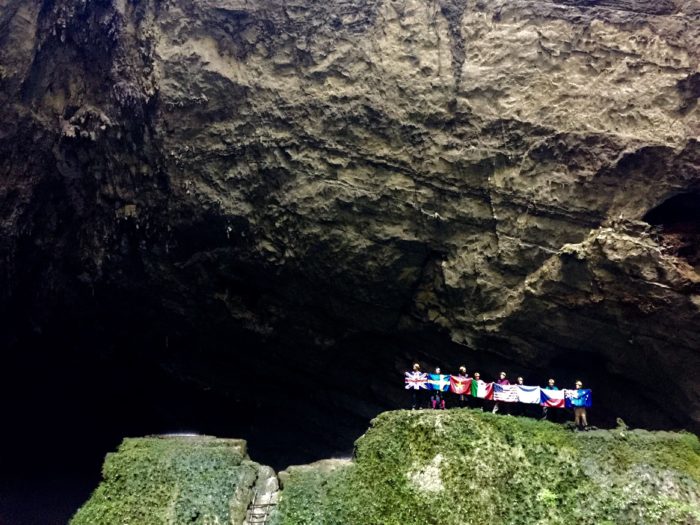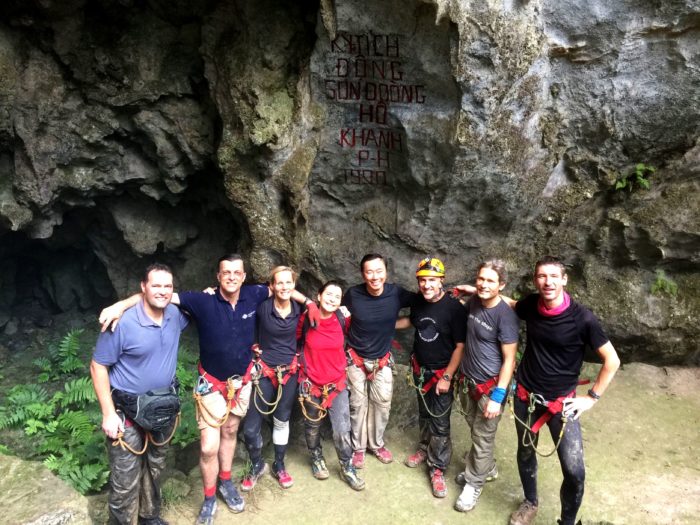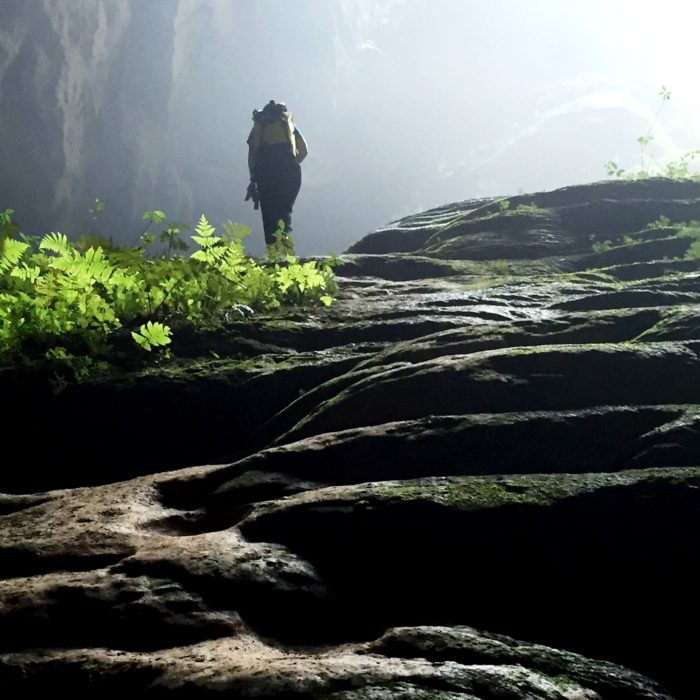27th May 2016 Hanoi, Vietnam
Son Doong – a Jewel in Vietnam’s crown

Last week I was fortunate enough to enjoy an amazing adventure, joining a group of fellow ambassadors on a five-day expedition to the world’s largest cave, Son Doong in Quang Binh province’s Phong Nha-Ke Bang national park. (Although the trip was organised by the Vietnamese government, let me assure readers that I took the time as annual leave and paid the joining fee myself.)
Son Doong was first explored by a British caving team in 2008-09, after they had been told about it by a local man, Ho Khanh. He had originally found the mouth of the cave in 1990, while sheltering from a storm during a foraging trip into the jungle. But it was only 18 years later that, urged on by his new British friends, he was able to find the mouth again. Along with the story of Ho Chi Minh and Frank Loseby (see previous blog), this is one of my favourite tales of unusual UK-Vietnamese collaborations. It also shows that even in the 21st century, we Brits are still world-class adventurers and explorers!

Getting to Son Doong requires trekking along jungle trails, across rivers, through the magnificent Hang En (Swallow Cave) and then through more jungle, before a rope-assisted 80 metre descent down steep, slippery rocks into the cave. So it’s not easy – although the professionalism of our guides made us feel safe throughout.
But what awaits is certainly worth all the sweat, mud, leech bites and wet feet. Son Doong is truly spectacular, full of views that look like special effects from a film, or scenes from another planet. The scale of the cave – nearly 200 metres high and 175 metres wide in parts – makes you feel tiny.

We emerged from the cave, though, with more on our minds than just Son Doong’s incredible beauty. There are important questions about how a country like Vietnam can strike the right balance between developing its rapidly-growing tourism industry, and protecting its natural heritage.
This is an immediate question for Son Doong as there is a proposal under consideration to build a cable car to and into the cave. As things stand, few people will ever get to Son Doong. In order to protect the cave, only around 500 guests are allowed to visit each year, and the tour company goes to great lengths to minimise the environmental impact. Those who support the idea of building a cable car argue that Son Doong is a jewel in Vietnam’s crown and should be seen by as many people as possible, not just the privileged few (like me). They argue that the massive influx of tourists would benefit the local economy and create jobs. Quang Binh is not a rich province and these arguments can’t be dismissed lightly.

Those opposing the cable car argue that its construction would cause a huge amount of damage to the natural fabric of the cave, and that the priority should be to protect what nature has created over millions of years. They point out that tourism is already growing fast in Phong Nha-Ke Bang (which has UNESCO World Heritage status), and that the park has several other wonderful caves that have been developed for mass tourism. And that it will be better for Son Doong to stand, unspoiled, as the symbol of the national park – in much the same way as the lure of Everest draws thousands of trekkers to the Himalayas in Nepal, even though few will ever climb it. They see a risk that if the cable car goes ahead, Quang Binh and Phong Nha-Ke Bang will become famous internationally for the wrong reasons: not for having the world’s largest cave, but for destroying the world’s largest cave.

Many countries face this kind of dilemmas, but they are particularly acute for Vietnam. The country has a tremendous range of natural attractions, from the mountains of Ha Giang to the limestone towers of Ha Long Bay to the beauties of the central coastline. Tourism, both domestic and international, is growing fast. British visitor numbers are rising every year. The rush to develop tourism is already causing environmental problems, with pollution in Ha Long Bay becoming a serious concern. Too many foreign tourists come just once, but don’t return.
Ultimately, the decision on the cable car is one for the Vietnamese authorities. I just hope that, as they weigh it up, they will recognize that preserving natural heritage and developing tourism aren’t mutually exclusive. And maybe take the time to look at the experience of the UK in protecting areas of outstanding natural beauty like the Lake District or the Brecon Beacons. It’s the unspoilt beauty of those places that keeps me, and millions of others like me, coming back time and again.
Which side of the argument are you on? Let me know.
Vietnam is a beautiful country! So green and full with mysterious places 🙂